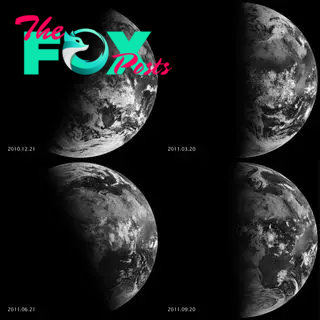Science
Fall equinox 2024: When it is, why it happens and what to look for
While meteorologists like to call fall at the beginning of September, astronomical autumn starts later, on the autumnal equinox. This year, it falls on Sunday, Sept. 22 at 8:44 a.m. EDT (12:44 UTC), according to the National Weather Service.
At this specific time, Earth's axis is tilted side-on to the sun, meaning there's an almost equal amount of sunlight and darkness across the globe.
This celestial geometry marks the changing of the seasons — from summer to autumn in the Northern Hemisphere and from winter to spring in the Southern Hemisphere. The word "equinox" is Latin for "equal night," one of two days per year when the lengths of daylight and darkness are the same across the globe.
The fall equinox is an important way to mark Earth's annual journey around the sun. The hours of darkness will gradually increase north of the equator until the solstice on Dec. 21, and vice versa south of the equator.
Related: 'Potentially hazardous' asteroid the size of a skyscraper to skim past Earth on Tuesday
More hours of night also mean more hours for stargazing; some of the year's best meteor showers are yet to come, and the next three full moons, including the Harvest Moon on Sept. 17, will be supermoons — making them appear bigger and brighter in the sky. If you don't have a good pair of stargazing binoculars or a nice backyard telescope, now's a great time to invest in one.

The equinoxes and solstices result from Earth's axis, which is tilted by 23.5 degrees, meaning different parts of the planet get more or less sunlight throughout the year.
-

 Science15h ago
Science15h agoHere’s What Trump’s Win Means for NASA
-

 Science3d ago
Science3d agoWhy Risky Wildfire Zones Have Been Increasing Around the World
-

 Science3d ago
Science3d agoIt’s Time to Redefine What a Megafire Is in the Climate Change Era
-

 Science5d ago
Science5d ago4 Astronauts Return to Earth After Being Delayed by Boeing’s Capsule Trouble and Hurricane Milton
-

 Science6d ago
Science6d agoThe Elegance and Awkwardness of NASA’s New Moon Suit, Designed by Axiom and Prada
-

 Science1w ago
Science1w agoSpaceX Launches Its Mega Starship Rocket. This Time, Mechanical Arms Catch It at Landing
-

 Science3w ago
Science3w agoYou Won’t Want to Miss October’s Rare Comet Sighting. Here’s How and When You Can See It
-

 Science1m ago
Science1m agoA New Spacecraft Could Help Determine if There’s Life on a Moon of Jupiter



























